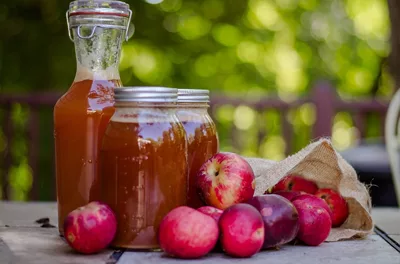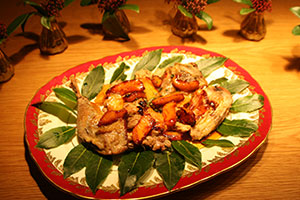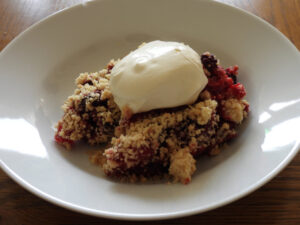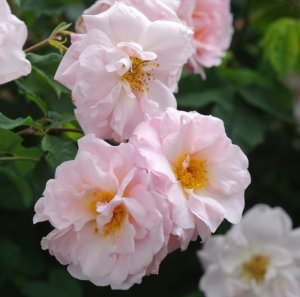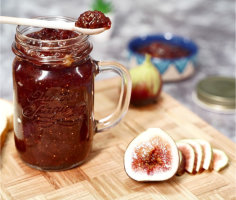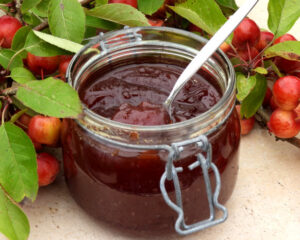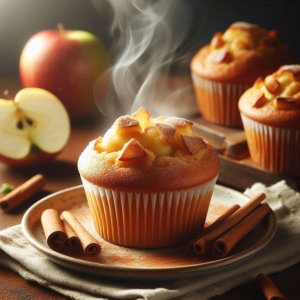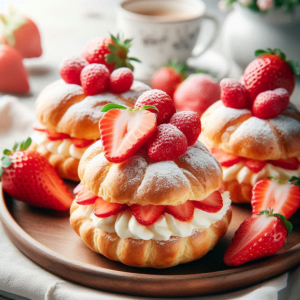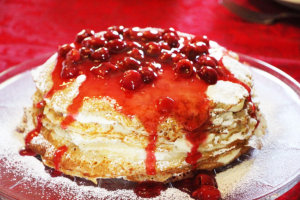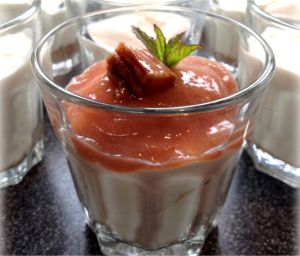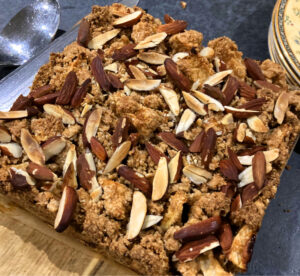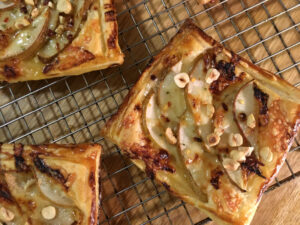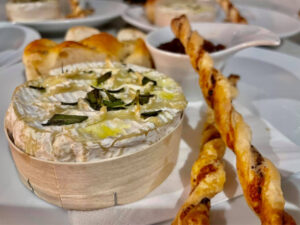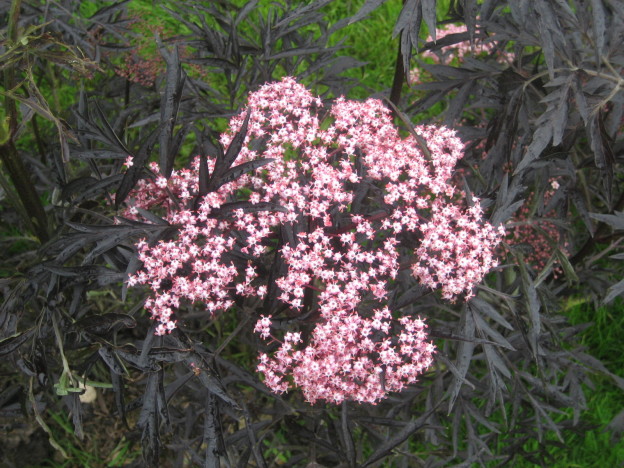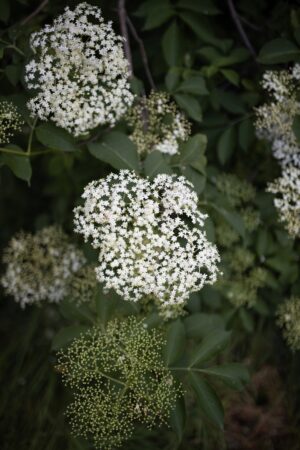Can I make cider from eating and cooking apples? Yes, all apples make cider, but the flavours from cider apples are better: most home cider brews are a mix of several varieties, the more, the merrier. How to Make Cider Here are two excellent videos on making your own cider at home. MIT has a… Continue reading Making Your Own Cider
Category: Recipes
Cooking with Cider this Christmas?
How about pheasant with caramelised apple and cider sauce! Ingredients (to serve 2-4) Method Pheasant and cider sauce Caramelised apples Once the sauce mixture is reduced, pour over and serve! Top tip This is a lovely, tasty wintery dish using well hung pheasant, but if you’re not the gamey type, it works equally well… Continue reading Cooking with Cider this Christmas?
Foraged Blackberry & Apple Crumble
Do you have a freezer full of blackberries? If not, then ignore the blackberry & enjoy your apple crumble! This time of year, mid-November, is hefty with apples. Down here in sunny Somerset, the late blackberries are only recently all gone from the bushes. If you have helpful kids around, chances are you have bags… Continue reading Foraged Blackberry & Apple Crumble
Rose Hips are Pretty & Good to Eat
Rose hips are mostly an ornamental second display from Autumn into Winter, but all rose hips are edible if you want to go through the trouble of preparing them Rose bushes have edible flowers and fruit, which are called hips. Wild hedge roses best rose hips list: Almost all roses will make hips if they get… Continue reading Rose Hips are Pretty & Good to Eat
Fine Dining al Fresco: Shrubbery for Two
The other day we mentioned Cornwall’s Million Pound edible hedge project, and, we assume in response, the RHS updated their list of edible flowers, along with a Country Living article adding a few more on top. We know that most garden owners are not breakfasting in the bushes, brunching off branches, or dining on their… Continue reading Fine Dining al Fresco: Shrubbery for Two
Walnut and Banana Bread Recipe
There’s something incredibly rewarding about harvesting ingredients straight from your own bit of Britain! If you’re lucky enough to have walnut trees, the experience of picking fresh walnuts, cracking them open, and incorporating them into your cooking adds a unique, personal touch to your meals. One of the best ways to use these homegrown gems… Continue reading Walnut and Banana Bread Recipe
Homemade Fig Jam Recipe
With Homegrown Figs There’s nothing quite as jammy as the satisfaction of your own fig jam crafted from fig you grew yourself in a British Summer. Serve without elaborating, and let your dining companion ask you where this sweet, honey-like jam is from. Only then tell them that you are part of an elite club… Continue reading Homemade Fig Jam Recipe
Hedgerow Jelly Recipe
Make a unique Jelly from Country Hedges & Wild Plants This recipe uses fruit commonly found in mixed hedges and wild plants (identify before eating them). Wild plums generally ripen around late summer, apples & crab apples generally ripen later, both can be found in quantity in time to mix with blackberries, and whatever else… Continue reading Hedgerow Jelly Recipe
Apple Muffins Recipe
There’s Nothing Quite Like Baking with Home-Grown Apples in your Apple Muffin Recipe. Their fresh, crisp flavour brings out the best in these delicious apple muffins. Whether you have an orchard in your garden or a single beloved tree, these muffins are a wonderful way to showcase your apples. For this recipe, we recommend using… Continue reading Apple Muffins Recipe
Raspberry Macarons Recipe
There’s nothing quite like the fresh, tangy flavour of home-grown raspberries, and what better way to enjoy them than in delicious raspberry macarons recipe? Growing your own raspberry plants is easy and rewarding. Pre-order bareroot raspberry plants now and have them delivered from November to March. With a little care, you’ll have a bountiful harvest… Continue reading Raspberry Macarons Recipe
Delicious Strawberry and Cream Choux Buns Recipe
Indulge in the delightful harmony of fresh strawberries and rich cream with our scrumptious Strawberry and Cream Choux Buns recipe. Bursting with flavour and elegance, these light and airy choux pastry buns are filled to perfection with velvety whipped cream and luscious slices of ripe strawberries. Whether you’re hosting a gathering or simply craving a… Continue reading Delicious Strawberry and Cream Choux Buns Recipe
Cherry Crêpes Recipe
Try something different this Pancake Day Shrove Tuesday is on the morrow, Tuesday 13th February, And you can mix up the usual chocolate or lemon filled pancakes with our delightful Cherry Crêpes recipe. These thin, delicate French style pancakes topped with juicy cherry compote will awaken your senses and satisfy your sweet cravings. Even better,… Continue reading Cherry Crêpes Recipe
Rhubarb Fool Recipe
Early-sprouting rhubarb will soon be ready for harvest. Whether it’s your own produce or from your friendly local greengrocer, give this rhubarb fool recipe a try – a delightful pick-me-up for the promises of spring around the corner! Ingredients: Method: 2. Whip the Cream: 3. Combine Rhubarb Compote and Whipped Cream: 4. Chill: 5. Serve… Continue reading Rhubarb Fool Recipe
Somerset Apple Cake with optional streusel twist
The streusel topping elevates a traditional tea time delicacy to a luxurious dessert. The apple store is usually looking a little depleted by this time of year, but if you still have a few Bramley apples knocking about this recipe is a lovely way of using them up. (If you don’t have Bramley’s any other… Continue reading Somerset Apple Cake with optional streusel twist
Comté & pear tartlets
February’s pickings from the vegetable patch can be sparse, but if you’re lucky you’ll have apples and pears from autumn’s harvest to use up. There might also be some winter salad leaves such as mizuna, lamb’s lettuce or baby spinach. Tossed in a punchy mustardy dressing, they’re the ideal counterpoint to this crisp and indulgently… Continue reading Comté & pear tartlets
Baked Camembert, Olive & Straws Recipe
The perfect food for your Christmas dinner party, New Years Eve, or all to yourself! Baked Camembert is both fancy and so simple to prepare with olives and pecorino straws: all your guests will be asking for the recipe. Ingredients: How to make the straws… How to make the baked Camembert…
Elderberry Syrup Recipe
Homemade Elderberry Syrup The Recipe: This is our family recipe, and we think it makes the best elderberry syrup we have ever tasted. Pick the berries on a dry day, (I added pieces of ginger before simmering) You will need: * Loads of elderberries – get a couple of kilos to begin with (take whole… Continue reading Elderberry Syrup Recipe
Elderflower Champagne Recipe
When you have enough Elderflower Cordial you might like to think about Elderflower Champagne. By the way, it is a good excuse to plant a few more Elder (Sambucus nigra) bushes – as you will find you have friends calling round in June and July almost daily and for the oddest reasons….. This is a… Continue reading Elderflower Champagne Recipe
Elderflower Cordial Recipe
Homemade Elderflower Cordial Recipe Late May – June is Elderflower time! Elderflower cordial in the shops is expensive and can be a bit sickly sweet. This homemade recipe makes great cordial and, with the use of Camden tablets your cordial will stay fresh for a long time. We also have a recipe for Elderflower Champagne (we… Continue reading Elderflower Cordial Recipe

